Have you ever wondered why trains come in various shapes and sizes? Well, get ready to embark on a journey where we unravel the secrets behind the different types of rail cars. Each type has a unique purpose, from sturdy boxcars carrying goods to sleek passenger cars transporting people. Imagine a world where trains only had one kind of car – it would be quite a dull ride! So, buckle up and join us as we uncover the excitement of different rail cars, making train travel a colorful and dynamic experience.
1. Flatcar

A flatcar is an open rail vehicle that transports heavy loads, equipment resistant to weather damage, and various machinery (such as buses, tractors, and excavators). There are two types of flatcars: general-purpose, which can carry various loads, and specialized, which can only carry a specific kind of goods.
General-purpose flatcars have a sturdy steel welded frame, a wooden or wood and metal decked floor, and foldable metal side and end boards. Extra frame beams reinforce the flooring platform. The open end-side acts as a crossover for wheeled vehicles entering the flatcar.
Furthermore, flatcars can carry loads with evenly distributed weight or weight concentrated in the middle. Specialized flatcars lack boards and may not have floors. They come with technologies allowing easy cargo security during transit and loading and unloading. Specialized flatcars include cars for transporting huge containers, timber, and automobiles (double-deck).
2. Boxmotor Car
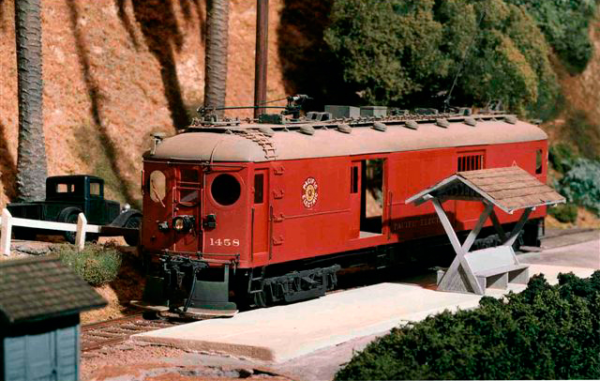
The word “boxcar” in American refers to an enclosed goods car that can carry a variety of loads and appears to be versatile. It’s among the different types of rail cars. A boxcar is a type of goods car with closed spaces on all sides for carrying cargo. The boxcar’s doors are sliding, meaning opening them doesn’t require any extra room within or outside the vehicle.
In addition, a sliding door is located on each side of a double-door boxcar. The boxcar is also a covered goods wagon, a goods van, a louver van, and other names outside of America. A hi-cube boxcar can carry more weight than a standard boxcar because of its height. These vehicles could only be used on tracks with enough clearance to accommodate their greater height due to their height.
3. Gondola
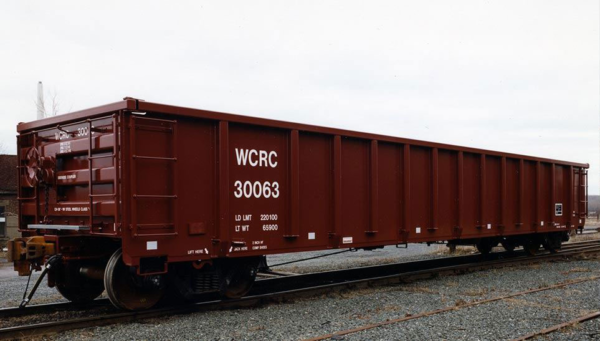
A gondola is a rail vehicle with high side walls and no roof. It transports loads from above, including bulk goods, pipes, wood, and other materials that don’t need rain or weather protection. Loading and unloading the gondola is easy because there is no roof. A hopper, a type of gondola, may have a solid body with no openings, or it may have angled drop-bottom hatches or chutes.
4. Tank Car

Tank cars are among the different types of rail cars. Any mode of transportation that has to move heavy loads constantly faces significant challenges when moving big volumes of liquid. Transporting liquid cargo requires specially constructed goods cars.
Tank cars are freight cars that convey liquid cargo. In addition, the tank cars have varying designs depending on the sort of liquid cargo they send. Tank trucks for volatile liquids and caustic and harmful chemicals are not the same as those for less dangerous cargo.
Also, tank cars frequently carry hazardous cargo, which calls for special engineering to move this cargo safely. Anything from volatile liquids like petroleum to liquid gas that you need to keep under pressure can be carried in the cargo. The torpedo tank car has a unique design to convey molten pig iron as part of the industrial steelmaking process.
5. Hopper Cars
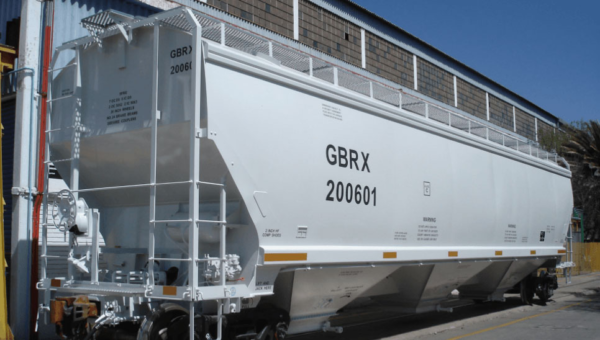
Hopper cars are a kind of freight car that comes in two different types: covered and open. These cars or covered hopper cars can move bulk materials, including grain crops, sugar, fertilizer, coal, mining ore, and fine-grained coal.
In addition, they have doors on the vehicle’s underside that you can open frequently from above to release the cargo. Most people use covered hoppers when the cargo is susceptible to weather damage or can be harmed by rain.
6. Coil Cars
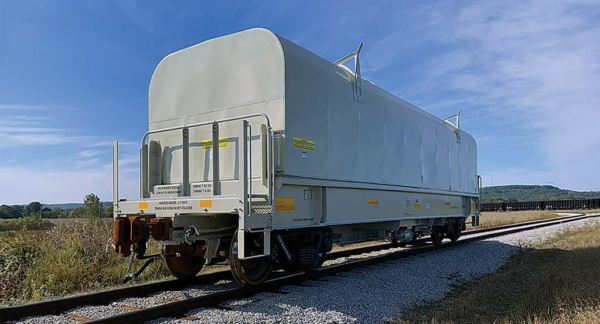
Among the different types of rail cars is the coil car. Coil cars are essentially a subgroup of gondolas, even though they resemble tankers more. The term comes from its cylindrical shape, perfect for carrying coil-shaped goods. You can load coil cars, leave them open, or equip them with a metal “hood” to further secure and cover the load.
7. Centerbeam
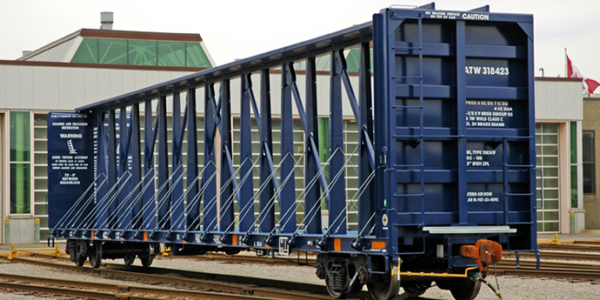
A centerbeam transports packaged items such as lumber, plywood, wallboard, fence posts, and other construction materials. To spread the weight of the shipment throughout the centerbeam rail car, you have to load and empty them equally. It’s crucial to load and unload the vehicle from both sides at the same time to keep it from leaning or toppling.
8. Well Car
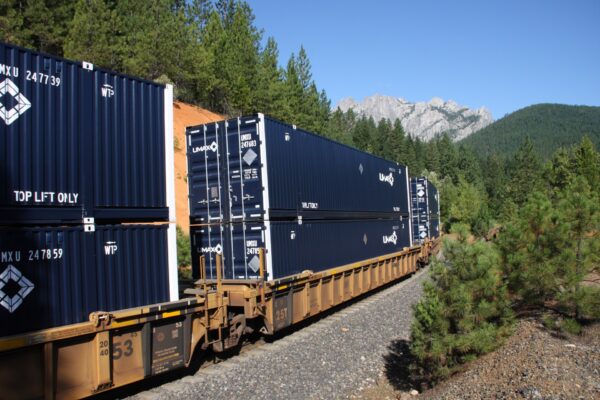
Well cars, sometimes referred to as “stack cars” or “well waggons,” usually accommodate intermodal containers. A depression near the rails is called the “well.” Well cars allow containers to be stacked on top of one another, with two containers per well car, because they ride lower than flatcars.
9. Auto Racks

Auto rack cars are unique train cars that transport vehicles. They enable the safe and effective transportation of cars over long distances due to the numerous levels of racks inside the vehicle. They’re also among the different types of rail cars.
10. Baggage Cars
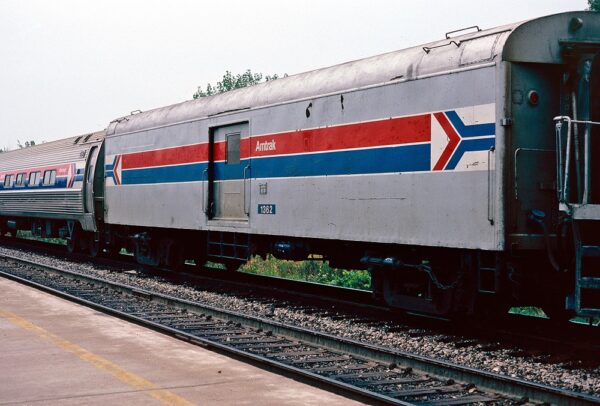
Freight cars are a form of passenger coach and can transport high-value cargo in freight compartments. Baggage cars are passenger cars that are right behind the locomotive to allow for speedy swapping out and loading.
They transport passengers and high-priority, lightweight freight, such as mail for postal delivery. While some baggage cars were only for high-priority, high-profit freight, others were mixed and occasionally for carrying passengers. When passengers went on longer journeys, their luggage was in certain freight-only baggage cars.
11. Dining Car

Long-distance trains with dining cars are convenience carriages that passengers usually stay in for several days. A dining car or restaurant car is a transport with seats and tables so that passengers can sit down and have a meal. A bar is in certain dining cars so that patrons can get drinks. There is typically a small kitchen where one can prepare meals in the automobiles. Long-distance trains typically contain these cars.
12. The Locomotive

Many people are unfamiliar with the terms used to describe railway cars. The locomotive, also known as a railway car, has a specific purpose. A train is a collection of railway cars that are linked together, with the locomotive serving as the first vehicle.
The locomotive is the vehicle that moves the train and can push and pull the other vehicles. It’s also among the different types of rail cars. Electricity, diesel engines, or steam can all power locomotives. Steam-powered locomotives are now historical landmarks and people use them for tourist excursions on historic train lines.
The engines found on current trains include diesel and electric-powered locomotives. Diesel engines are for hauling heavy loads and providing electricity to remote locations.
13. Observation Car
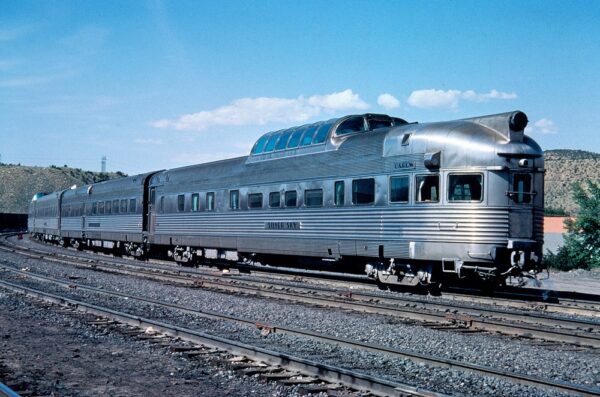
An observation car is a type of passenger car that provides passengers with a better view of the landscape the train passes through. An observation car’s purpose is to provide passengers with a clear view of the landscape the train travels through. While some observation carriages feature a roof, others are covered yet feature open sides or expansive windows. These train cars are frequently present on tourist trains.
14. Covered Hopper
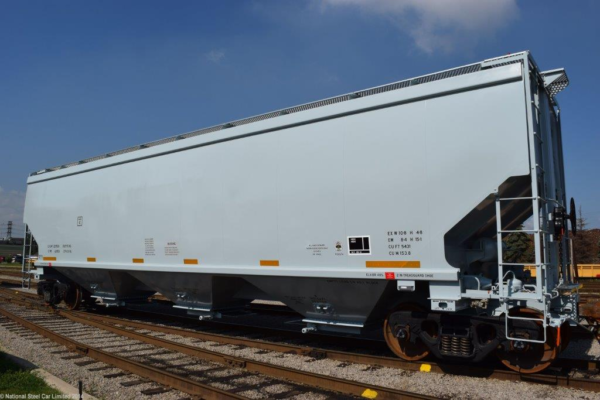
The covered hopper is among the different types of rail cars. Hopper railcars have an open top where you load the products. After loading, you cover the top to keep the product safe as it travels from one location to another.
A hopper railcar’s floor is sloping, allowing the product inside to be unloaded through the bottom doors using gravity. Furthermore, you can use it to carry free-flowing dry bulk materials such as rice, sugar, soda ash, cement, roofing granules, sand, corn, wheat, barley, and fertilizer.
15. Couchette Car

A couchette car is a type of passenger car for long-distance, particularly nighttime travel. A couchette car has two compartments, each containing several benches or seats that one can transform into beds. This layout, or rail car, allowed passengers to travel for multiple days and nights while still getting a good night’s sleep on the train.
16. Comet Coach
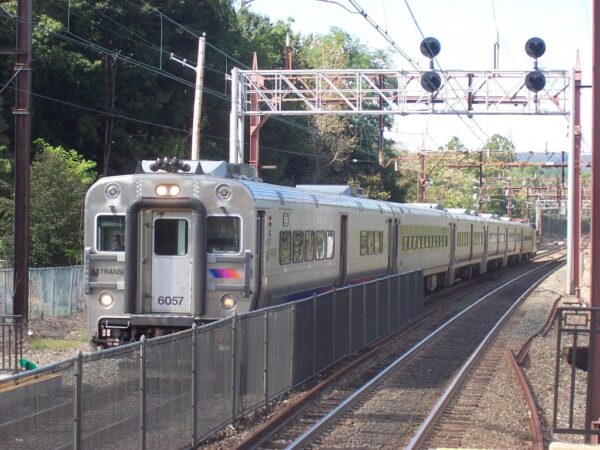
The Comet Coach is a vehicle that transport passengers over short distances. It’s among the different types of rail cars. They are still regularly used as commuter coaches, transporting people to and from the city for work. While some just offer seating space, others have standing and sitting areas combined. This coach-style is most commonly for commuter travel in and around major cities.
17. Sleeping Car

A sleeping car is a type of railroad vehicle that accommodates people for sleeping. There are several possible bed arrangements: benches that unfold to become beds or bunks suspended from the coach’s roof. Also, there are no private chambers in this open-plan setup.
There were often two layouts for the sleeping cars: one for daytime travel and another for nighttime or sleeping. When night falls, the cars reconfigure to a sleeping position, which they return to in the morning.
18. Slip Coach

An uncommon passenger car in contemporary rail transportation is the slip coach. The slip car’s purpose was to separate from the main train and roll on its own without assistance from the station.
A slip coach’s purpose was to disengage from the main train while it was moving. At that point, the slip coach trundled into the station on its own steam while the main train continued on its way.
By doing this, the main train will not come to a stop, saving time. A flying switch is another term for a slip coach in the United States, along with slip carriage and slip part. Once picked up by a separate train, the slip coach might be transported to a destination different from the main train that started it all.
19. Refrigerator Car
Refrigerator cars transport commodities that require regulated temperature settings to avoid spoilage in transit. They’re also among the different types of rail cars. Refrigerator cars are insulated boxcars and use various cooling technologies to chill the interior.
These vehicles deliver perishable commodities or temperature-sensitive cargo such as dairy products, meat, fresh vegetables, dairy products, and fish. Refrigerated vans, often known as reefers, can be cooled using dry ice, ice, or liquid carbon dioxide.
20. Stock Cars
Transporting livestock over large distances by rail is an important task. To minimize animal pain and ensure they have access to food and shelter during their journey, specially designed carriages transport live animals.
The designs of stock cars vary depending on the kind of livestock they transport. Sometimes, stock cars are simply modified box cars, while others are designed entirely differently to house different animals. A single-deck stock car is typically for large-bodied animals like cattle or horses.
Two or three-deck stock vehicles are for smaller livestock like pigs, sheep, and poultry. Specialized stock carriages have extra padding to protect the animals and come with feeding and watering systems to transport racehorses.
Conclusion
Learning about different types of rail cars opens a fascinating world of transportation. From boxcars to passenger cars, each serves a unique purpose, contributing to the efficiency and variety of trains. Exploring these types sparks curiosity about the fantastic ways goods and people travel on rails.

